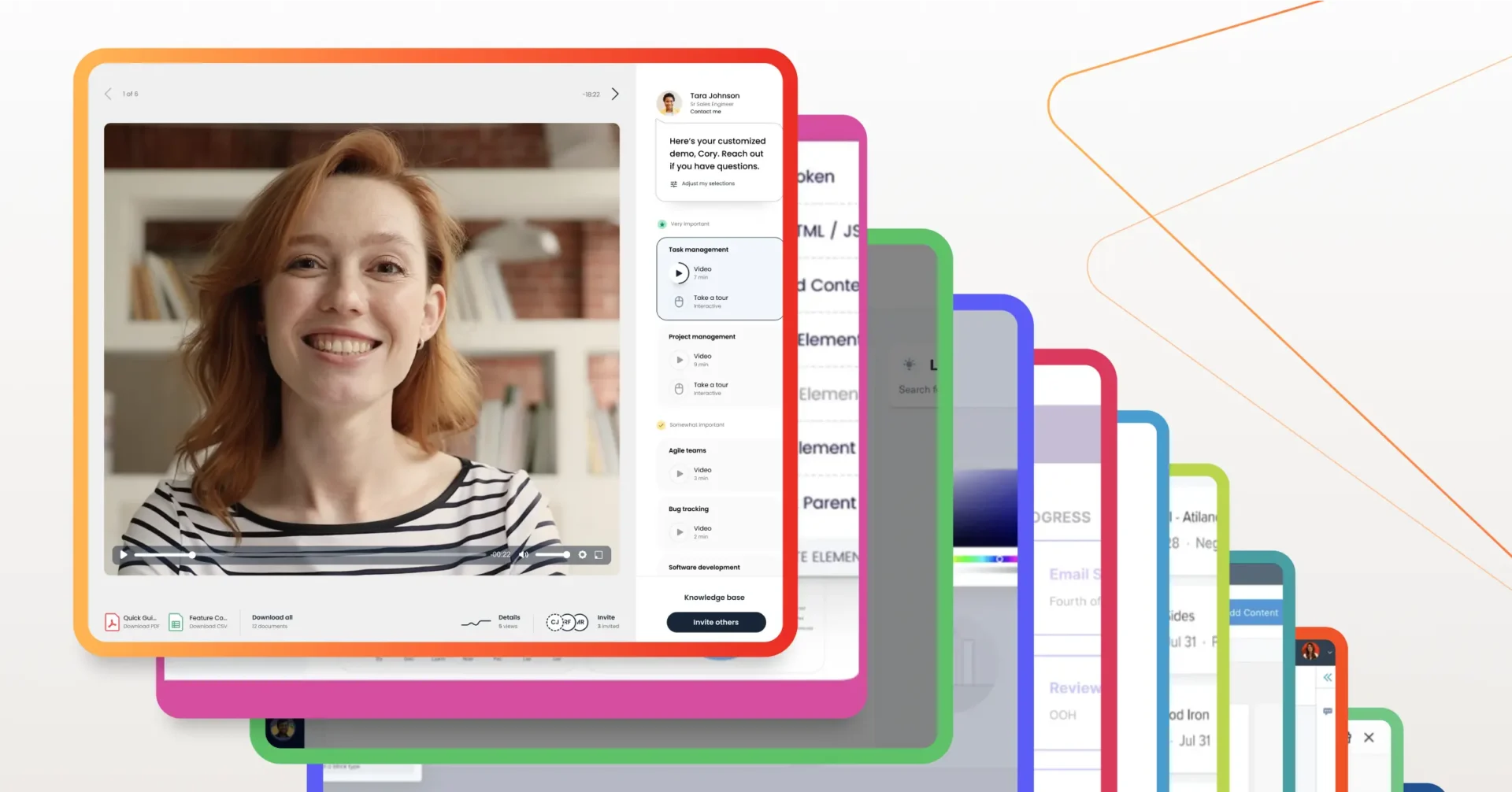According to Gartner, 80% of B2B sales interactions between companies and potential buyers happen in digital channels. And Forrester found that the number of those interactions is also increasing—with enterprise deals taking 27 or more interactions before closing.
With all these interactions, it’s essential to create a cohesive, accurate story for your buyers. The right product experience can act as the thread that ties these touchpoints together, ensuring every interaction reinforces your value and aligns with the buyer’s goals. Think of it as your product’s best first impression: Buyers who experience your product in action are more likely to trust it, understand its benefits, and envision its role in solving their problems.
How do you create an unforgettable product experience? With product experience software that captures attention, builds trust, and inspires. This software can showcase your solution in its best light while allowing buyers to explore it on their terms—without pressure from sales reps. Whether it’s interactive demos, self-guided tours, or personalized walkthroughs, the right product experience software bridges the gap between curiosity and confidence.
Let’s dive into exactly what product experience means and where to find the best product experience software on the market.
Best Product Experience Software: Quick Overview
TL;DR? We’ve got you. Here’s a quick overview of the product experience software discussed below.
- Consensus: For an unmatched buying experience
- Storylane: For demo storage centralization
- Navattic: For cloning applications
- Walnut: For guided product tour templates
- Chameleon: For adding guides to existing interface
- Pendo: For custom messaging journeys
- UserGuiding: For in-app help centers
- Appcues: For personalized onboarding journeys and checklists
- Product Fruits: For AI-generated walkthroughs
- WalkMe: For workflow building
- Optimizely: For feature testing and improvement
- Adobe Experience Manager: For content and digital asset management
- Sprig: For product improvement recommendations
- Salsify: For consistent messaging
What is Product Experience?
Product experience, sometimes shortened to PX, covers every part of a customer or potential customer’s journey with a specific product. It’s the entirety of how they interact with the product, starting from the moment they first interact with it rather than from the moment of purchase.
Product Experience vs. User Experience
While product experience encompasses the full journey a customer or buyer takes with a product—from discovery to adoption and beyond—user experience (UX) hones in on the design, usability, and functionality of the product itself. PX is about the what and why of the journey, while UX focuses on the how.
Let’s say you have a high cart abandonment rate. Product experience would look at the entire buyer journey, exploring whether your messaging, product demos, or pricing structure align with customer expectations. User experience, on the other hand, would dive into the checkout screen design, identifying friction points in the interface and making changes to encourage the buyer to move from placing items in the cart to completing their purchase.
Product Experience vs Customer Experience
Compared to PX, customer experience (CX) focuses less on the product and how your users interact with it and more on how your customers interact with your company as a whole. In addition to how they use the product, customer experience encompasses how they connected with your sales team, how your marketing engaged them, and how your customer support helped them.
A great product experience can lead to a great customer experience. Every time your buyer connects with your sales team to talk about your product, goes through a product demo, and explores your product for onboarding, you’re building both your PX and CX.
What is Product Experience Software?
Product experience software assists with product experience management (PXM). It helps with managing, tailoring, and improving the entire experience a customer or potential customer has with a product. It utilizes product data to deliver a product experience in which the user finds personalized, informative, engaging, and customer-focused interactions.
Benefits of using product experience software include:
- Helping potential users envision their success on your platform
- Empowering your future champions
- Reducing the need for repeat demos
- Reducing unqualified demos
- Shortening the sales cycle
- Improving buyer relationships
- Improving onboarding experiences
- Introducing new features
Types of Product Experience Software
When we talk about product experience software, you might also hear it called product tour software. Essentially, this type of interactive demo software provides guided walkthroughs that lead users through specific parts of a product’s interface and functionality.
Product tour software has two main types: buyer experience product tours and onboarding and adoption product tours. The former supports your sales team in demonstrating your product to potential buyers. The latter is used for walking a new buyer through your product and increasing the adoption rate of your features.
The Best Product Experience Software for Buyer Experiences
B2B buying gets a lot easier with this buyer experience-focused product experience software. Which are the best?
1. Consensus
![]()
Consensus is your guide to creating unique, educational, inspiring, and truly engaging product experiences. Its product tour software lets you create interactive product tours with engaging video demos, dynamic product content, and all the assets you need to make buying simple.
Consensus gives your buyers the power to envision using your platform while inspiring them to become your future champions. They can personalize their own product tour journey by telling the platform what features they want to see most, and then the platform delivers a custom tour built just for their needs.
As your champions and stakeholders go through the product tours, you receive crucial intent data that informs how you build your product experience. This intent data tells your sellers when and how to move your buyers to the next steps. Consensus users see shorter sales cycles, bigger deals, more deals—and overall better relationships with their buyers.

What’s available:
- Demo Creator: Create demos for every stage of your customer journey, designed for a personalized experience every time.
- Product Tours: Show your buyers the features they want to see and tell a story through a unique multimedia tour.
- Screen Recorder: Capture and edit video demos right through Consensus.
- Chrome Extensions: Create video demos instantly with the help of Consensus’s Chrome Extensions, going beyond screenshots to build a more interactive experience.
- Demo Player: Deliver interactive demos on any browser or device.
- DemoBoards: Provide your buyers with a secure, branded, and customized landing page that shows off your product.
- BuyerBoard: Give your champions a place to show your product to key stakeholders and colleagues.
- Content Downloads: Supplement your demos with additional content that can be easily downloaded by your buyers.
- Public Links and Merge Links: Create custom links that can be shared via your social media, email campaigns, website, and more.
- Demo Library: Build a centralized hub for your demos that’s accessible to your team and easily searchable.
- Demolytics: Track how your buyers are engaging with your demos to receive intent data that helps you better qualify and interact with your leads.
What’s not:
- Consensus is focused on enterprise and mid-market companies, so it’s not ideal for businesses in earlier stages.
Pricing: Consensus builds custom plans based on licenses and use cases.
Get started with a product experience software that’s trusted by 50% of the top 30 software companies in the world.
2. Storylane

Storylane is an interactive product tour software that lets users create guided product tour demos and sandbox solutions via a browser extension. The platform uses artificial intelligence to add interactive features, analyze intent data, and build customized demo flows.
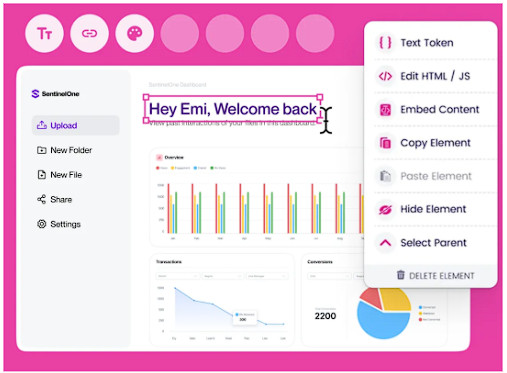
What’s available:
- Account Reveal: Receive data and insights into leads and notifications when a high-value interest arises.
- Lead forms: Adjust product tours based on information inputted by the user.
- Tokenized demos: Use text, image, date, and time tokens to personalize product tours.
- DemoHub: Centralize product tours and other demos in one place.
What’s not:
- Lack of personalization capabilities
- Lack of demo storage
- Limited integrations or features on less expensive plans
Pricing:
- Basic: Free
- Starter: $40 per month
- Growth: $500 per month
- Premium: $1,200 per month
- Enterprise: Custom pricing
3. Navattic
![]()
Navattic is a product tour software that lets users create self-guided tours that mimic their actual software. Users clone their application to capture their screens and then personalize the tours. They can also create unique share links and track analytics.
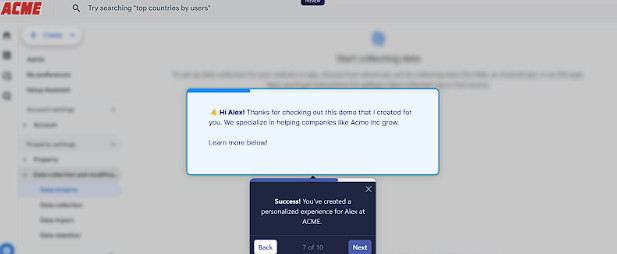
What’s available:
- Checklists: Select what users are interested in learning.
- Share links: Create and track links connected to each buyer.
- Input triggers: Create trigger actions for how viewers are interacting with a tour.
- Analytics and notifications: Track how viewers are engaging and receive notifications for real-time interactions.
What’s not:
- Lack of a user-friendly interface
- Scarce and unhelpful analytics
- No bulk change capabilities
Pricing:
- Starter: Free
- Base: $600 per month
- Growth: $1,200 per month
- Enterprise: Custom pricing
4. Walnut
![]()
Walnut uses a browser extension to capture software screens and create interactive demos. Walnut offers guided structures, or templates, that users can edit by replacing text, integrating graphs and charts, and adding notes.
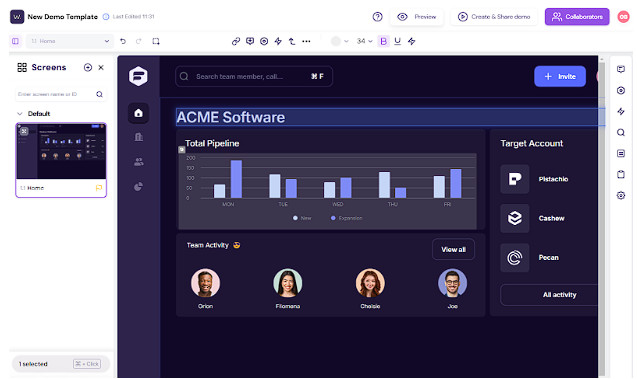
What’s available:
- Product Capture: Use a browser extension to capture product screens.
- Guided Structures: Build interactive demos with pre-built templates.
- Demo Wizard: Update a buyer’s info to automatically bulk update a demo.
- Demo Analytics: Track how buyers engage with demos.
What’s not:
- Steep learning curve
- Customization challenges
- Lack of user-friendly interface
Pricing:
- Lite: $9,200 per year
- Pro: $20,000 per year
- Enterprise: Custom pricing
5. Chameleon

Chameleon is a product adoption platform where users can build product tours for selling and onboarding and then add interactive features like banners, lightboxes, and videos. Users can also add content to their product through Chameleon, like embeddable cards and tooltips.

What’s available:
- Segmentation: Segment audiences, track conversion, and trigger next steps.
- Launchers: Add customizable in-product widgets.
- Microsurveys: Collect feedback through in-product surveys.
- Templates: Pre-made templates for product tours.
What’s not:
- Buggy software
- Lack of integrations and customization options
- Inefficient integrations
Pricing: Chameleon has four pricing plans: HelpBar, StartUp, Growth, and Enterprise. All pricing is determined by your Monthly Tracked Users (MTUS).
The Best Product Experience Software for User Onboarding & Adoption
Let’s look at best product experience software that’s focused more on existing and new users rather than potential buyers.
1. Pendo

Pendo is a product experience platform focused on feature adoption where users can create guides for customers to adopt a product, engage customers with messaging functions, track analytics and customer sentiment, and study a customer’s session.
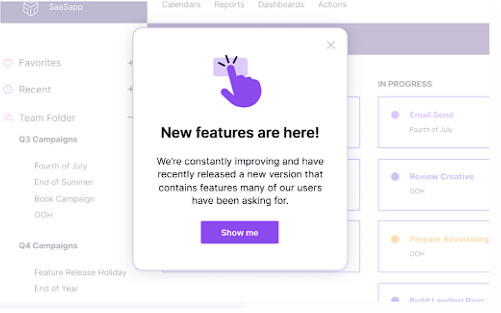
What’s available:
- In-app guides: Launch personalized guides or product tours in-app for onboarding and announcing new features.
- Pendo Orchestrate: Create, personalize, and organize messaging journeys.
- Session Replay: Watch video playbacks of how clients use a product.
- Pendo Listen: Capture customer feedback and generate AI-driven insights.
What’s not:
- Inaccurate data reporting
- Steep learning curve
- Overly complex features and interface
Pricing: Pendo has four plans: Base, Core, Pulse, and Ultimate. All have custom pricing.
2. UserGuiding

UserGuiding is a product adoption tool that lets users build onboarding flows that sit on top of their products or applications. They can also add in-app tooltips and other pop-up options to highlight features to existing customers.

What’s available:
- Resource Centers: Provide customers with in-app educational material.
- Announcement Modals: Set up announcements and updates in-app.
- Knowledge Base: Centralize all content and educational materials in one place.
- Analytics dashboard: Measure the effectiveness and engagement of onboarding content.
What’s not:
- Frequent bugs
- Limited value for cost
- Lack of customization options and feature functionality
Pricing: UserGuiding has three pricing plans: Basic, Professional, and Corporate. All pricing is determined by the UserGuiding user’s Monthly Active Users (MAU).
3. Appcues

Appcues is a product adoption software that incorporates product tours into the onboarding experiences. Appcues uses personalized welcome flows and targeted checklists to build a customized onboarding journey. It also offers tools to announce new features to already onboarded customers, tracks user adoption and feedback, and provides advanced integration options.
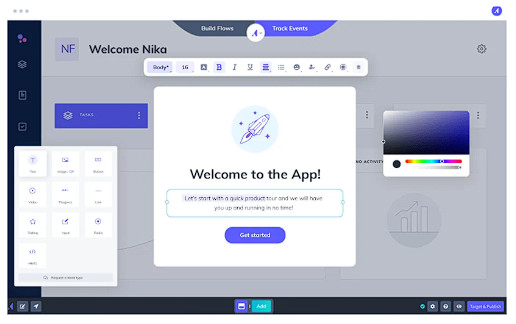
What’s available:
- Appcues Builder: Use the Builder Chrome Extension to create workflows and track new events.
- Appcues Studio: Manage workflows and measure in-app behavior in the Studio.
- Events Explorer: Measure product usage and adoption.
- NPS and surveys: Collect user feedback in the client’s product or application.
What’s not:
- Lack of workflow functionality
- Unhelpful and insufficient analytics
- Limited integrations, which don’t always work
Pricing: Appcues has three pricing plans: Essentials, Growth, and Enterprise. All pricing is determined by the number of team members, features included, and an Appcues user’s product’s monthly users.
4. Product Fruits

Product Fruits is a user onboarding platform that creates personalized guided product tours or onboarding checklists. Users can set up triggers for adoption flows and offer in-app tips and contextual support. They can also let customers report bugs in-app and incorporate an in-app help center for frequently asked questions.
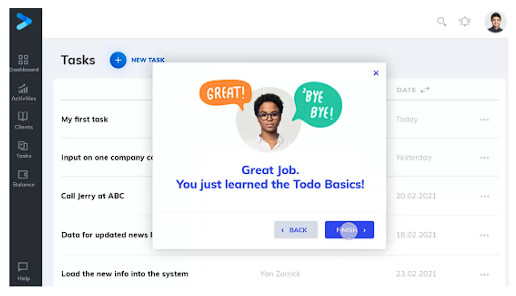
What’s available:
- AI-generated walkthroughs: Generate product tours with artificial intelligence.
- AI writer: Generate onboarding content with AI.
- Checklist builder: Create onboarding checklists for onboarding flows.
- Tooltips: Highlight new features or offer contextual in-app support with tooltips.
What’s not:
- Lack of content management features
- Frequent bugs
- Limited customization options
Pricing: Product Fruits has three pricing plans: Core, Boost, and Enterprise. Pricing is determined by the number of the customer’s product users.
5. WalkMe

WalkMe is a digital adoption platform that overlays over any application and lets users create workflows that provide personalized guidance on using new applications or new features. Users can measure software usage, both by their own employees and their customers. It can also help reduce manual tasks with AI.
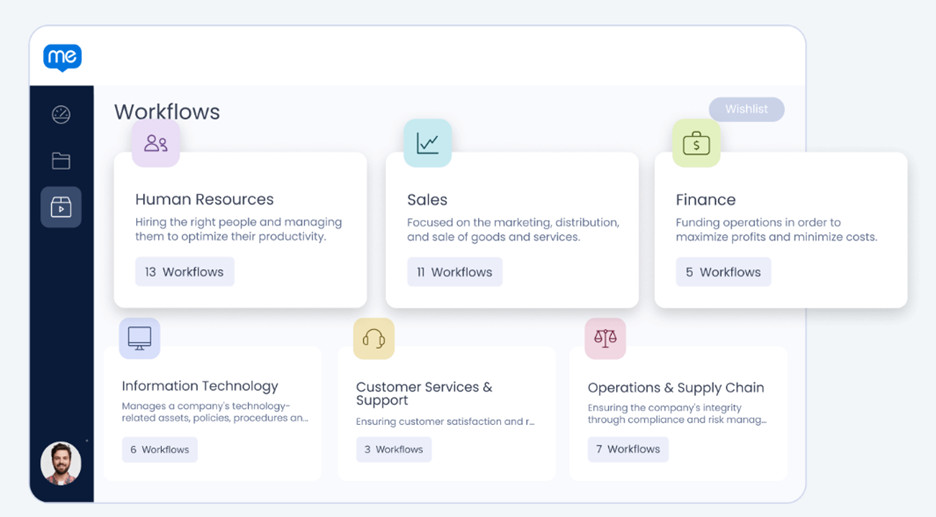
What’s available:
- Application usage: Measure how much employees and customers are using different applications.
- Workflow editor: Build, manage, and edit workflows.
- Workflow recommendations: Receive AI-driven tips in workflow builds.
- ActionBot: Utilize a conversational interface to answer questions and complete tasks for employees.
What’s not:
- Poor customer support
- Steep learning curve
- Overly complex interface
Pricing: WalkMe doesn’t publicly display pricing.
More Product Experience Software
We’ve talked about buyer experience-focused product experience software. We’ve talked about customer-focused product experience software. But product experience software can do a lot, like these other unique applications.
1. Optimizely

Best for: Marketing campaigns and feature testing
Optimizely is a digital product experience platform built with marketing in mind. The platform lets marketing teams create and manage content, test products and features on their audience, collect data on potential buyer interactions, and personalize user experiences.

What’s available:
- Feature Experimentation: Test features with controlled rollouts.
- Data Platform: Unify and segment data for real-time testing and experimentation.
- Content Management: Build, store, personalize, and send content in one place.
- Content Marketing: Build and collaborate on marketing campaigns.
What’s not:
- Steep learning curve
- Slow performance
- Frequent bugs
Pricing: Optimizely builds custom pricing plans based on features and use cases.
2. Adobe Experience Manager

Best for: Content management
Adobe Experience Manager is a product experience manager with multiple products in its suite. It offers content and digital asset management, the ability to integrate forms into products, a documentation publisher, and a learning management system (LMS). It creates one location for content and assets, which helps keep messaging consistent and prevent content silos.

What’s available:
- Content Management System (CMS): Create, manage, store, and send content.
- Digital Asset Management (DAM): Source, improve, and send digital assets.
- Learning Management System (LMS): Train employees and onboard customers.
- Digital Enrollment: Create responsive forms for customers to sign.
What’s not:
- Overly complex system
- Low value for cost
- Steep learning curve
Pricing: Adobe creates custom pricing plans.
3. Sprig

Best for: Product improvement
Sprig is an AI-driven product experience platform where users can see how their customers are using their products, get feedback directly from buyers, and receive AI insights and recommendations. It can show users areas for improvement to boost product and feature adoption.
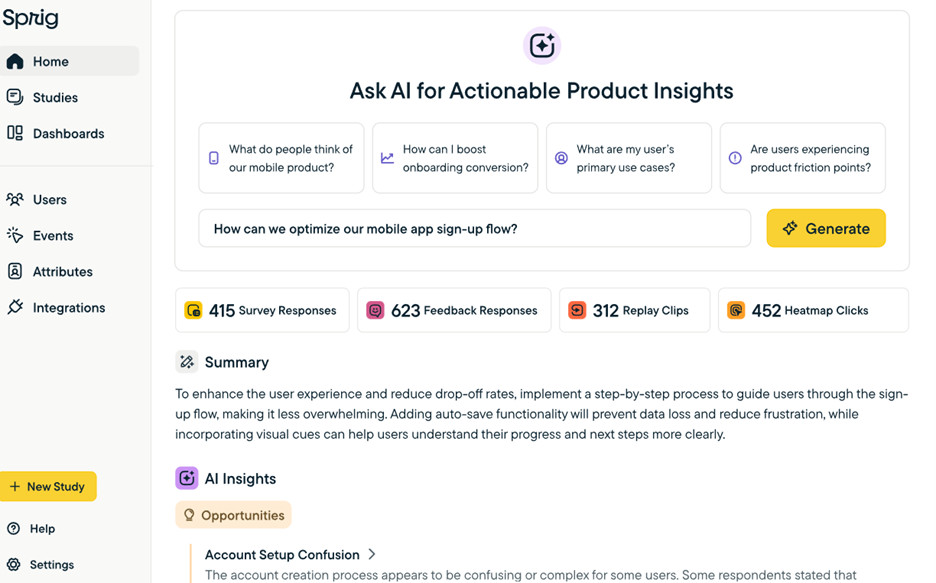
What’s available:
- Replays: Record user sessions.
- Heatmaps: Receive a digital representation of in-product interactions.
- AI Explorer: Get AI-generated information pulls on user behavior and sentiment.
- AI Recommendations: Receive AI-driven actionable insights.
What’s not:
- Limited survey options
- Bugs in surveys
- Limited feature functionality
Pricing:
- Individual: Free
- Starter: $199 per month
- Enterprise: Custom pricing
4. Salsify

Best for: Creating consistent messaging
Salsify is a product experience platform that lets users centralize all product content, deliver unified product experiences across the digital world, and automate manual processes. With this platform, users can use Salsify’s features to create their own content, as well as build a place to store this content where it’s accessible to all buyer-focused teams.
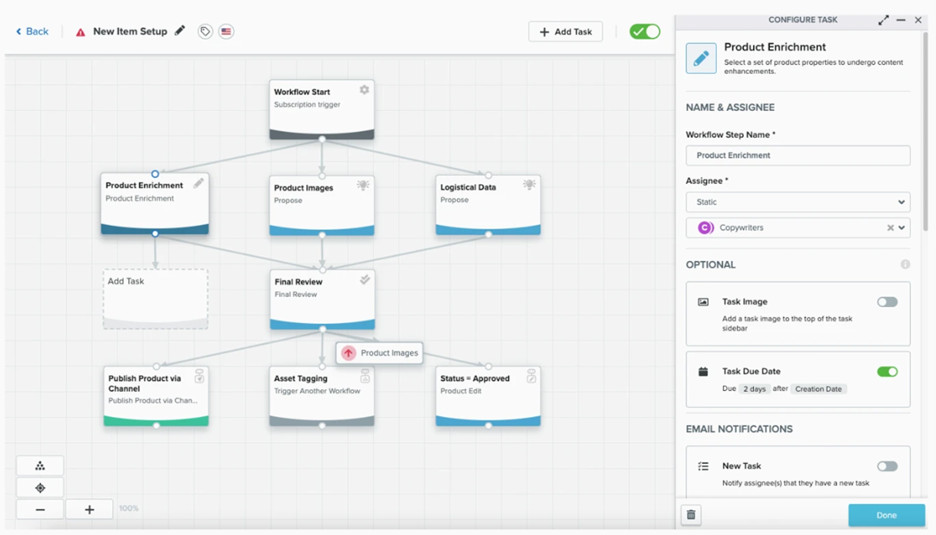
What’s available:
- PIM: Centralize product data.
- Enhanced Content: Build and syndicate below-the-fold layouts.
- Automation: Automate manual workflows.
- Activation Insights: Receive engagement analytics.
What’s not:
- Content import issues
- Slow performance
- Lack of customization options
Pricing: Salsify does not publicly display pricing.
Use the Best Product Experience Software for the Ultimate Buyer-Led Experiences
According to McKinsey, companies that focused on experience-led growth by improving their product and customer experience more than doubled their revenue compared to companies that didn’t. By providing an engaging, hands-on journey, you can shape a better customer experience—starting from their very first interaction and continuing through renewals, upsells, and years of loyal advocacy.
With Consensus, you get the best product experience software, designed to create one killer buying journey. Consensus lets you leverage the power of personalization by allowing your potential buyers to tell the platform what features they care about the most. From there, Consensus builds a unique product tour that helps them envision their future success on your platform.
Consensus also gives your future champions the tools to share their tours with key stakeholders, boosting your stakeholder discovery and significantly cutting down your sales cycle length.
The result? Better buyer relationships, more sales, and bigger deals.
